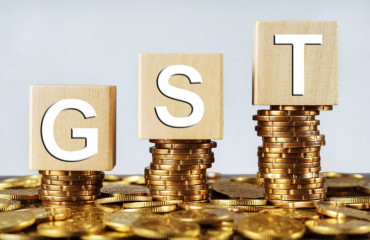
Every Friday, Plain Facts publishes a compilation of data-based insights, complete with easy-to-read charts, to help you delve deeper into the stories reported by Mint in the week gone by. The Goods and Services Tax (GST) monthly collections grew at the slowest pace in three years in June, while capital expenditure plans slowed to a multi-year low. Meanwhile, the funding winter ended for the Indian startups, with higher funding and deals in June.
Every Friday, Plain Facts publishes a compilation of data-based insights, complete with easy-to-read charts, to help you delve deeper into the stories reported by Mint in the week gone by. The Goods and Services Tax (GST) monthly collections grew at the slowest pace in three years in June, while capital expenditure plans slowed to a multi-year low. Meanwhile, the funding winter ended for the Indian startups, with higher funding and deals in June.
GST gloom
In a departure from the usual, the Central government did not release the GST monthly collection data on the first day of the month. However, the number reported in the media painted a gloomy picture. GST collections grew 7.7%to ₹1.74 trillion in June, which is the slowest pace growth since June 2021. The growth in May was 10%. The growth has been lucklustre in the past two months when compared to the average growth of 11.7% recorded in 2023-24.
Startups' silver lining
Amid the ongoing funding winter, startups has had a good June in terms of funding and deals. Private equity (PE) and venture capital (VC) pumped $1.6 billion in June, which was more than double the funding seen in the same month last year, Mint reported. Moreover, the higher funding came from fewer deals (62 in June 2024 as opposed to 64 in June 2023). While June data provides silver lining, the funding in the January-June period in 2024 was still down 24.3% from the same period last year.
Negating notes
97.9%: This is the share of ₹2,000 notes in circulation that has been returned to the Reserve Bank of India so far. The central bank had announced the withdrawal of this denomination of banknotes in May last year, nearly seven years after it was introduced during demonetisation to meet the currency requirements of the economy. The printing of the notes were stopped in 2018-19 but withdrawal from circulation started last year.
Capex blues
New project announcements plunged to multi-year lows in the April-June quarter of 2024-25, showed provisional data from the project-tracking database of the Centre for Monitoring Indian Economy (CMIE), Mint reported. While private companies continued to lead in the June quarter, with their investments worth ₹35,206 crore, they fell below ₹1 trillion for the first time since the June quarter of 2020. Economists attributed the drop to the just-concluded general elections during which the model code of conduct restricts much of government activity and leaves companies waiting.
Investment boom
India's equity markets have been on an impressive run, with the Sensex having surpassed the 80,000-mark on Wednesday. The allure of the stock markets can be seen in rising popularity of equity investments, with a steady number of demat accounts being opened each month and Systematic Investment Plan (SIP) contribution consistently growing, a Mint analysis showed. At the same time, the preference for bank deposits has declined, with the ratio of market valuation of BSE 500 firms to aggregate bank deposits reaching 1.87 times, the highest level since the peak of the 2007 bull run.
Wedding bonanza
₹10 trillion: This is the size of India's wedding industry, according to brokerage firm Jefferies. India, which is known for its opulent weddings, spends the most on them, second only to groceries. With an average expenditure of $15,000, the spending on weddings is twice the expenditure on education. Given the scale of weddings in India, it is one of the activities that is also a key driver for several industries in India from jewellery to apparel and travel, the brokerage added.
Google emissions
Google's greenhouse gas emissions shot up nearly 50% in the past four years, the tech giant revealed in its annual environmental impact report. The company attributed this rise to its reliance on energy-guzzling data centres that power its artificial intelligence initiatives. Emissions hit 14.3 million tonne carbon dioxide equivalent (tCO2e) as against 9.7 million (tCO2e) in 2019. While the goal is to reach net-zero emissions by 2030, the company said it was "an extremely ambitious goal" and "won't be easy."
Chart of the week: Power Up
The 2024 summer was one of the hottest years in recent times, with heatwaves causing disruption to normal lives. As such, the power consumption grew in the April-June period. The power demand met was the highest in May in the country as the arrival of monsoon in some states offered some relief in June.
